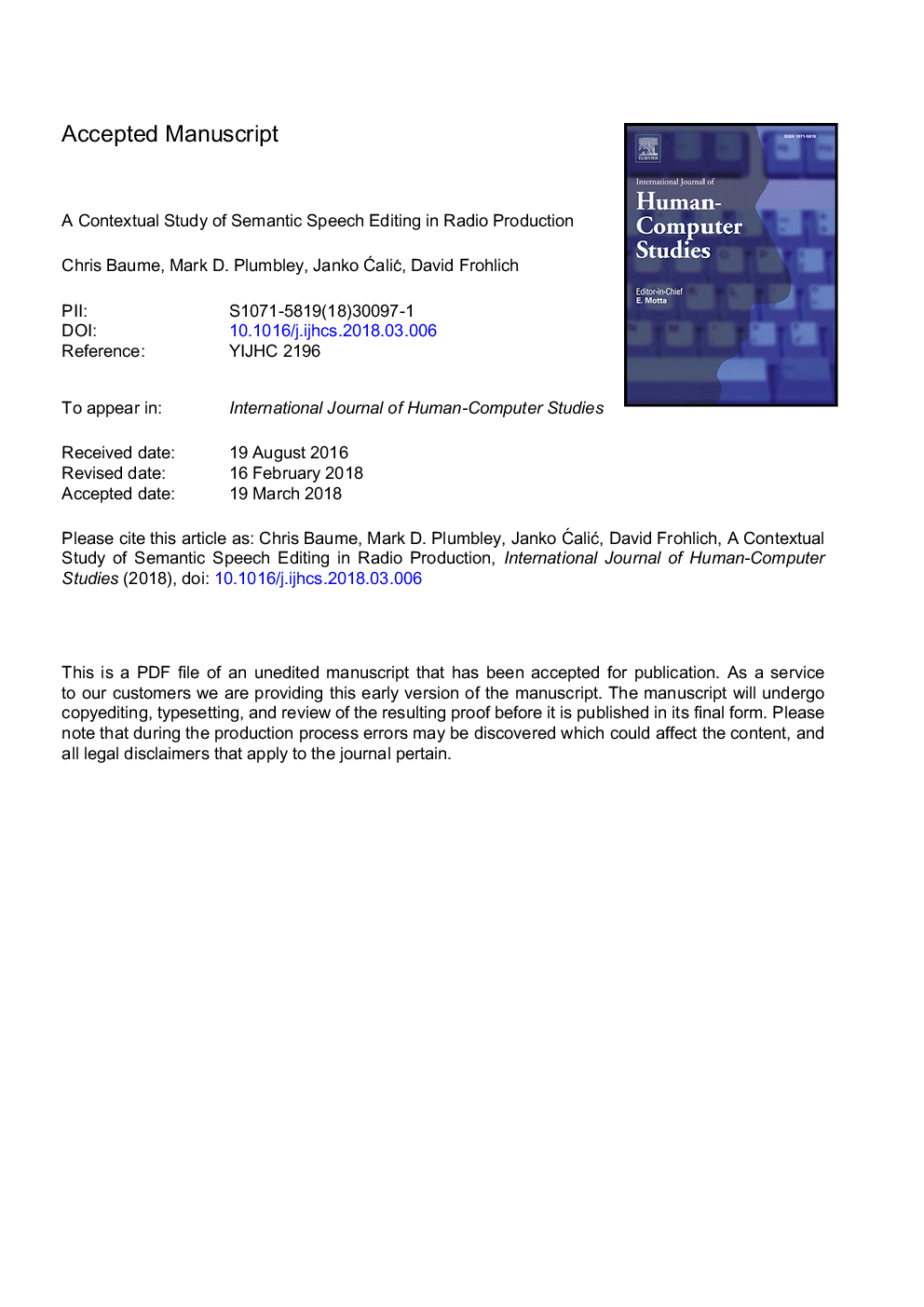| Article ID | Journal | Published Year | Pages | File Type |
|---|---|---|---|---|
| 6860966 | International Journal of Human-Computer Studies | 2018 | 41 Pages |
Abstract
We observed that the participants in our study wrote detailed notes about their recordings and used annotation to mark which parts they wanted to use. They collaborated closely with the presenter of their programme to structure the contents and write narrative elements. Participants reported that they often work away from the office to avoid distractions, and print transcripts so they can work away from screens. They also emphasised that listening is an important part of production, to ensure high sound quality. We found that semantic speech editing with automated speech recognition can be used to improve the radio production workflow, but that annotation, collaboration, portability and listening were not well supported by current semantic speech editing systems. In this paper, we make recommendations on how future semantic speech editing systems can better support the requirements of radio production.
Related Topics
Physical Sciences and Engineering
Computer Science
Artificial Intelligence
Authors
Chris Baume, Mark D. Plumbley, Janko ÄaliÄ, David Frohlich,
